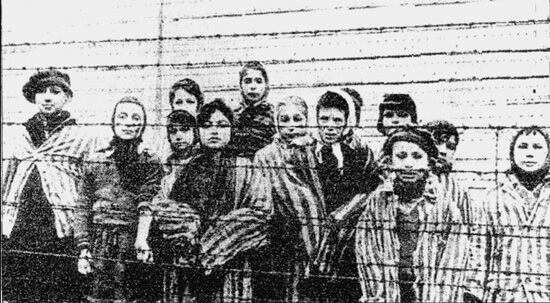From 1942-1944, there was an almost continuous transportation of Jews to Auschwitz-Birkenau from countries either occupied by or allied to Germany. The approximate number of people transported from individual countries was: 426,000 from Hungary; 300,000 from Poland; 69,000 from France; 60,000 from The Netherlands; 55,000 from Greece; 25,000 from Belgium; 10,000 from former Yugoslavia; 7,000 from Italy; 690 from Norway.
Between April and early July 1944, 440,000 Jews were deported from Hungary, of whom 426,000 were transported to Auschwitz. The SS sent 320,000 of them directly to the gas chambers in Auschwitz-Birkenau, while 110,000 were sent to forced labour. Within weeks of their arrival at Auschwitz, the SS transferred many Hungarian Jews to labour and concentration camps in Germany and Austria.
In addition to the 1.1 million Jews murdered at Auschwitz, the Nazis had other victims: Poles 74 000; Romas/Gypsies 21 000; Soviet PoWs 15 000; and individuals of other nationalities (Soviet civilians; Czechs, Yugoslavs; French; Germans and Austrians) 10 000 — 15 000.
Auschwitz I
Auschwitz I was the first camp established near the city of Oświęcim (Auschwitz) in Poland. Construction began in May 1940 in abandoned Polish army barracks. The SS sent prisoners as forced labour to extend the site by enlarging the camp. The first prisoners at Auschwitz included German prisoners transferred from the Sachsenhausen concentration camp in Germany, where they had been imprisoned as repeat offenders, as well as Polish political prisoners.
Similar to most German concentration camps, Auschwitz I was constructed to satisfy three aims:
(i) to incarcerate enemies and perceived enemies of the Nazi regime;
(ii) to have an available supply of forced labourers for deployment in SS-owned, construction-related enterprises (and later, armaments and other war-related production);
(iii) to serve as a site for the elimination of targeted sectors of the population whose death was determined by the SS and police authorities to be essential to the security of Nazi Germany.
Auschwitz I had one gas chamber and crematorium in a separate building outside the prisoner compound. Here the SS first experimented with Zyklon B as a mechanism of mass murder. The success of these experiments led to the adoption of Zyklon B for use in all gas chambers at Auschwitz.
More

